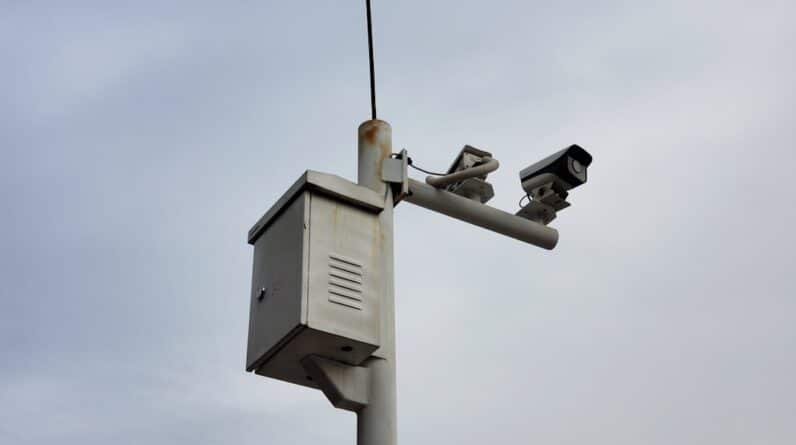In an era where technology is rapidly evolving, artificial intelligence (AI) has emerged as a transformative force across various sectors, including disaster management. You may find it fascinating how AI can enhance our ability to predict, respond to, and recover from disasters. The integration of AI into disaster management processes not only streamlines operations but also significantly improves the accuracy of predictions and the efficiency of responses.
As natural disasters become more frequent and severe due to climate change and urbanization, the need for innovative solutions like AI becomes increasingly critical. AI’s role in disaster management encompasses a wide range of applications, from early warning systems to recovery efforts. By harnessing vast amounts of data and employing sophisticated algorithms, AI can analyze patterns and trends that humans might overlook.
This capability allows for more informed decision-making and resource allocation during crises. As you delve deeper into the various applications of AI in this field, you will discover how it can save lives, minimize damage, and facilitate a more coordinated response among agencies and communities.
Key Takeaways
- AI plays a crucial role in disaster management by providing early warning systems, predictive analysis, disaster response and recovery, and communication and coordination.
- Early warning systems powered by AI can help in detecting and predicting disasters such as earthquakes, tsunamis, and hurricanes, allowing for timely evacuation and preparation.
- AI enables predictive analysis by analyzing historical data and patterns to forecast the impact of disasters, helping authorities to allocate resources and plan response strategies.
- In disaster response and recovery, AI can be used for damage assessment, resource allocation, and optimizing search and rescue operations, leading to more efficient and effective response efforts.
- AI facilitates communication and coordination during disasters by analyzing and processing large volumes of data from various sources to provide real-time information and support decision-making for emergency responders.
AI for Early Warning Systems
One of the most significant contributions of AI to disaster management is its application in early warning systems. These systems are designed to detect potential disasters before they occur, providing crucial time for preparation and response. You might be surprised to learn that AI can analyze data from multiple sources, such as weather patterns, seismic activity, and social media feeds, to identify signs of impending disasters like hurricanes, earthquakes, or floods.
By processing this information in real-time, AI can generate alerts that enable communities to take proactive measures. For instance, machine learning algorithms can be trained on historical data to recognize patterns associated with specific types of disasters. When similar conditions arise, the system can issue warnings based on its predictive capabilities.
This not only enhances the accuracy of forecasts but also reduces false alarms that can lead to public complacency. As you consider the implications of such technology, it becomes clear that AI-driven early warning systems can significantly improve community resilience by ensuring that individuals and organizations are better prepared for potential threats.
AI for Predictive Analysis

Predictive analysis is another area where AI shines in disaster management. By leveraging historical data and real-time information, AI can forecast the likelihood of various disaster scenarios. You may find it intriguing how this capability allows emergency management agencies to allocate resources more effectively and develop strategic plans tailored to specific risks.
For example, AI can analyze past flood events to predict which areas are most vulnerable during heavy rainfall, enabling authorities to pre-position resources and personnel in high-risk zones. Moreover, predictive analysis extends beyond immediate threats; it can also inform long-term planning and policy-making. By understanding trends in disaster frequency and severity, governments and organizations can invest in infrastructure improvements and community education programs that mitigate future risks.
As you explore the potential of AI in predictive analysis, you will see how it empowers decision-makers with insights that lead to more resilient communities and better preparedness for future disasters.
AI for Disaster Response and Recovery
When a disaster strikes, the speed and effectiveness of the response can mean the difference between life and death. AI plays a crucial role in enhancing disaster response efforts by optimizing resource allocation and improving situational awareness. You might be amazed at how AI-powered tools can analyze real-time data from various sources—such as satellite imagery, drones, and social media—to assess damage and identify areas in need of immediate assistance.
This information allows emergency responders to prioritize their efforts and deploy resources where they are most needed. In addition to immediate response efforts, AI also aids in recovery processes following a disaster. By analyzing data on affected populations and infrastructure, AI can help organizations develop targeted recovery plans that address the specific needs of communities.
For instance, machine learning algorithms can identify patterns in post-disaster recovery efforts, enabling agencies to learn from past experiences and improve future responses. As you consider the implications of these advancements, it becomes evident that AI not only enhances immediate disaster response but also contributes to long-term recovery and resilience-building efforts.
AI for Communication and Coordination
Effective communication and coordination among various stakeholders are essential during a disaster response. AI can facilitate this process by streamlining information sharing and enhancing collaboration among agencies, organizations, and communities. You may find it interesting how AI-driven platforms can aggregate data from multiple sources, providing a centralized hub for information dissemination.
This ensures that all parties involved have access to the same real-time updates, reducing confusion and improving overall coordination. Furthermore, AI can assist in identifying key stakeholders and establishing communication channels tailored to specific audiences. For example, chatbots powered by natural language processing can provide timely information to the public while freeing up human resources for more complex tasks.
As you explore the role of AI in communication during disasters, you will see how it fosters a more cohesive response effort by ensuring that everyone is on the same page.
Ethical Considerations in AI for Disaster Management

While the benefits of AI in disaster management are substantial, ethical considerations must also be taken into account. You may wonder about the implications of relying on algorithms for critical decision-making processes during emergencies. Issues such as data privacy, algorithmic bias, and accountability come into play when discussing the ethical use of AI in this context.
For instance, if an algorithm is trained on biased data, it may produce skewed predictions that disproportionately affect certain communities. Moreover, transparency is crucial when deploying AI systems in disaster management. Stakeholders must understand how decisions are made and what data is being used to inform those decisions.
As you reflect on these ethical considerations, it becomes clear that fostering trust among communities is essential for the successful implementation of AI technologies in disaster management.
Challenges and Limitations of AI in Disaster Management
Despite its potential advantages, there are several challenges and limitations associated with the use of AI in disaster management that you should consider. One significant hurdle is the availability and quality of data. For AI algorithms to function effectively, they require access to vast amounts of accurate data from diverse sources.
In many regions, especially those prone to disasters but lacking robust infrastructure, data collection may be insufficient or unreliable. Additionally, there is a risk of over-reliance on technology during emergencies. While AI can provide valuable insights and support decision-making processes, human judgment remains essential in crisis situations.
You might find it concerning that an overemphasis on automated systems could lead to complacency among responders or a lack of critical thinking when faced with unexpected challenges. Balancing technological advancements with human expertise is vital for effective disaster management.
Future Developments in AI for Disaster Management
Looking ahead, the future of AI in disaster management holds immense promise as technology continues to evolve. You may be excited about the potential for advancements such as improved machine learning algorithms that can analyze even larger datasets with greater accuracy. As researchers develop more sophisticated models, we can expect enhanced predictive capabilities that will further refine early warning systems and response strategies.
Moreover, the integration of emerging technologies like blockchain could revolutionize data sharing among agencies and organizations involved in disaster management. By creating secure and transparent records of information exchange, blockchain could enhance trust among stakeholders while ensuring that critical data is readily accessible during emergencies. As you contemplate these future developments, it becomes evident that the ongoing evolution of AI will play a pivotal role in shaping more resilient communities capable of effectively navigating the challenges posed by disasters.
In conclusion, artificial intelligence has already begun to transform disaster management practices significantly. From early warning systems to recovery efforts, its applications are vast and varied. While challenges remain—particularly concerning ethics and data quality—the potential benefits far outweigh these obstacles.
As you engage with this topic further, consider how embracing AI technologies could lead to more effective disaster preparedness and response strategies that ultimately save lives and protect communities around the world.
One related article to The Role of AI in Disaster Management is “AI in Entertainment: Scriptwriting, Gaming, and Special Effects.” This article explores how artificial intelligence is being utilized in the entertainment industry to enhance scriptwriting, create immersive gaming experiences, and revolutionize special effects. To learn more about the impact of AI in entertainment, you can read the full article here.
FAQs
What is AI?
AI, or artificial intelligence, refers to the simulation of human intelligence in machines that are programmed to think and act like humans. This includes tasks such as learning, problem-solving, and decision-making.
How is AI used in disaster management?
AI is used in disaster management to analyze large amounts of data from various sources such as social media, satellite imagery, and sensors to provide real-time information about the disaster. It can also be used to predict the impact of a disaster, optimize resource allocation, and assist in search and rescue operations.
What are the benefits of using AI in disaster management?
Using AI in disaster management can help improve response times, enhance decision-making, and ultimately save lives. It can also help in identifying patterns and trends in data to better prepare for future disasters.
What are some examples of AI applications in disaster management?
Some examples of AI applications in disaster management include using machine learning algorithms to predict the path of a hurricane, using natural language processing to analyze social media posts for real-time information during a disaster, and using computer vision to analyze satellite imagery for damage assessment.
Are there any challenges or limitations to using AI in disaster management?
Challenges and limitations to using AI in disaster management include the need for high-quality data, potential biases in algorithms, and the ethical considerations of using AI in life-and-death situations. Additionally, there may be limitations in the accessibility and affordability of AI technology in certain regions.






